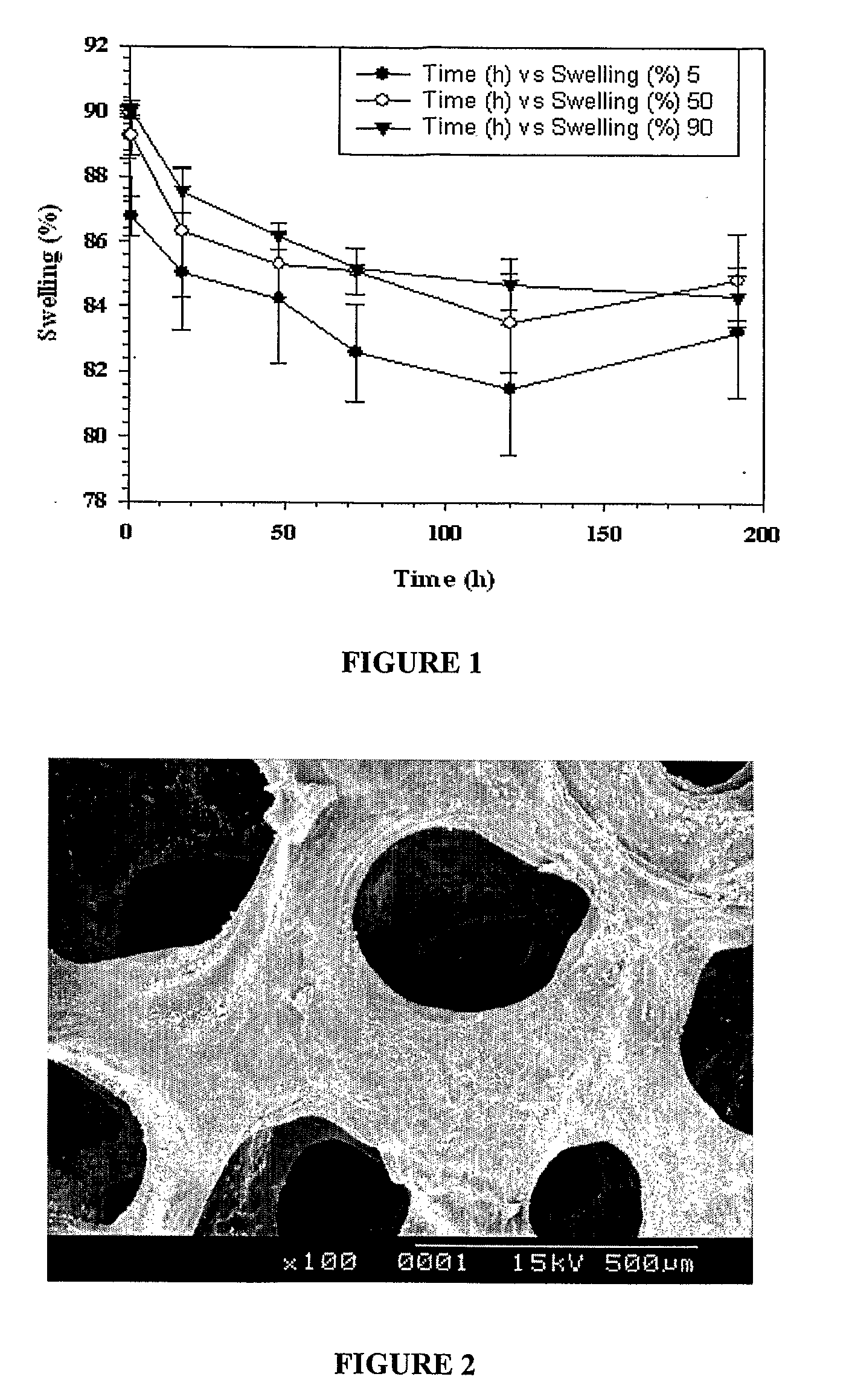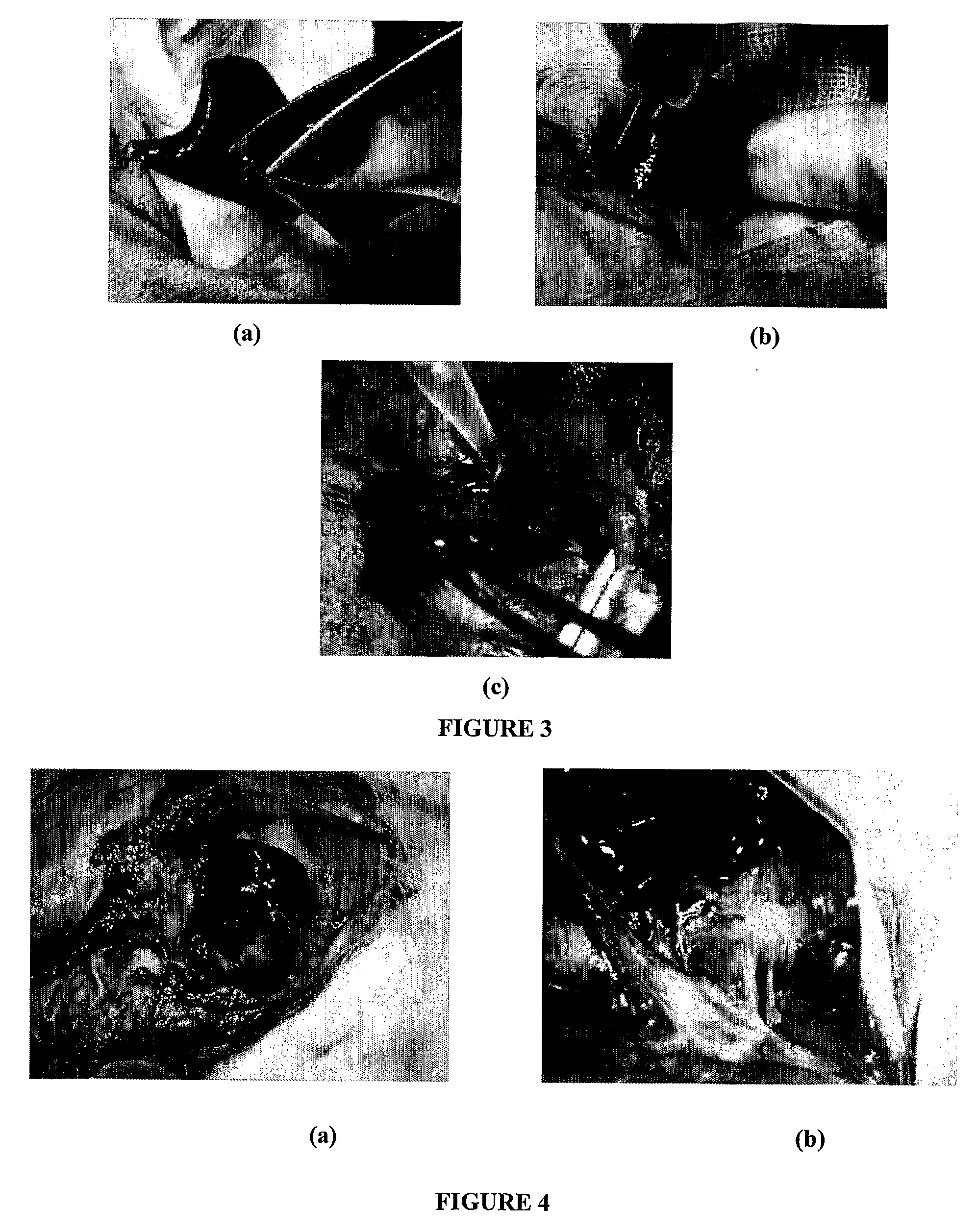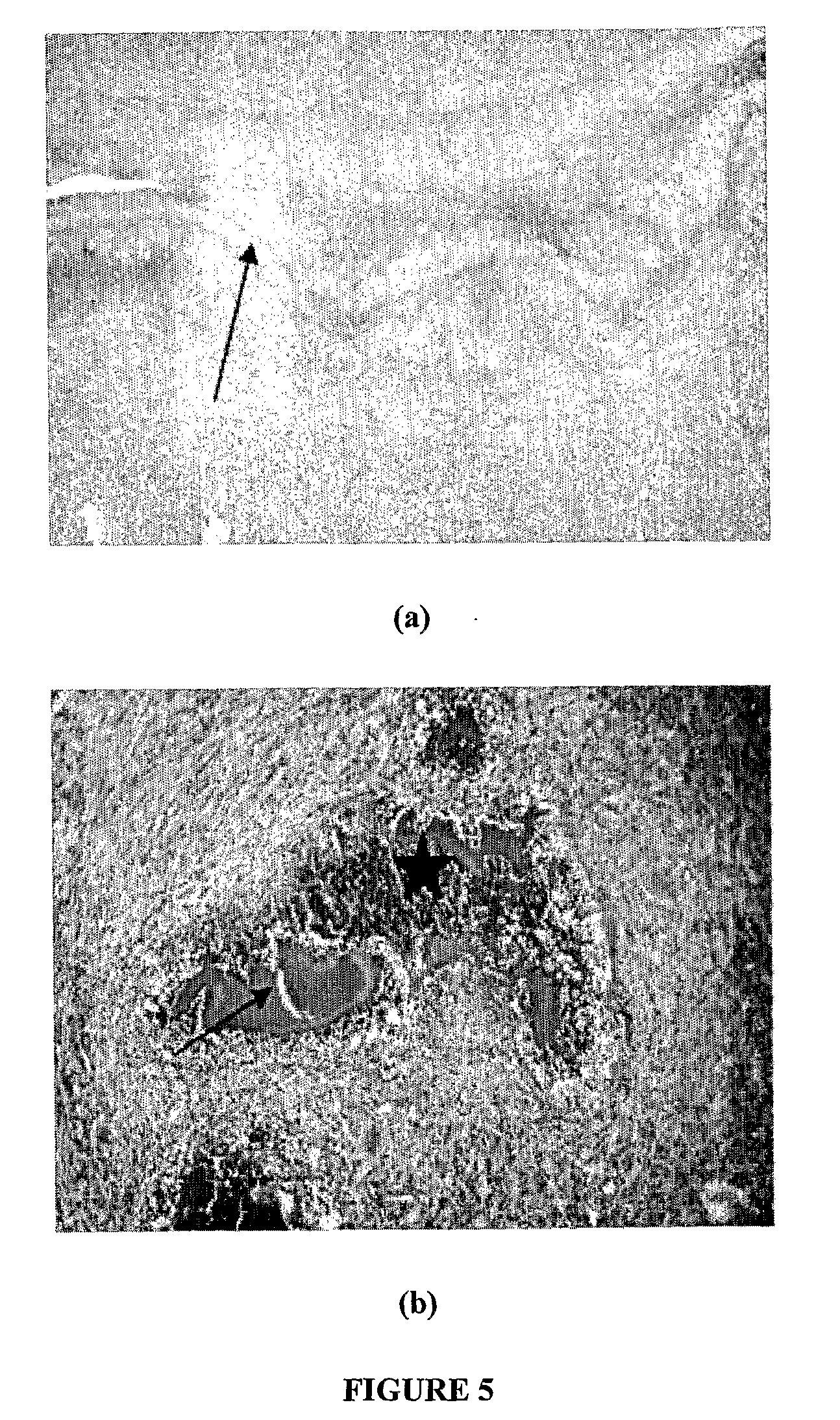Biocompatible and Biodegradable Biopolymer Matrix
a biocompatible and biodegradable technology, applied in the direction of biocide, plant growth regulators, pharmaceutical non-active ingredients, etc., can solve the problems of limiting its use, serious health problems, and damage to the treated tissues of adhesives
- Summary
- Abstract
- Description
- Claims
- Application Information
AI Technical Summary
Benefits of technology
Problems solved by technology
Method used
Image
Examples
example 1
Preparation of Chitosan Hydrochloride
[0090]The chitosan hydrochloride was prepared by the method of Austin and Sennett, 1986. Chitosan (Viscosity average molecular weight 311 kDa, degree of deacetylation 74%) 10 g was dispersed in 100 mL of 60% ethanolic HCl. It was then kept stirring magnetically for 3 h at 20° C. The Chitosan hydrochloride formed was then filtered off and washed extensively with acetone-water mixture (6:2) until the filtrate was free from chloride ions as evidenced by lack of any precipitate with silver nitrate solution. The product was then dried at room temperature. The approximate yield of chitosan hydrochloride was 14 g (0.88 mole acid per mole Chitosan). The pH of a 10% solution of this modified chitosan in water was found to be between 4.5 and 5.
example 2
Preparation of DDA
[0091]Dextran (5 g, M.W 500 kDa) was dissolved in 100 mL of distilled water. Calculated amount of sodium periodate was added to this solution according to the percentage of oxidation required. The solution was allowed to stir magnetically at 25° C. in dark for 6 h. The degree of oxidation was determined by iodometry. The solution was then dialyzed against distilled water until it was free from periodate. Complete removal of periodate was ensured by testing the dialyzate for the absence of turbidity or precipitate with an aqueous solution of silver nitrate. The solution was then frozen −78° C., lyophilized and stored in a desiccator in the refrigerator at 4° C. Representative data are given in Table 1. Yields ranged from 80 to 90%.
TABLE 1Oxidation of dextran (MW 500,000 Daltons) with sodium metaperiodateDextran(gm)Sodium m-periodate (gm)Degree of oxidation (%)51.335.16 ± 0.2 53.3550.14 ± 0.5 5690.4 ± 0.43
example 3
Preparation of Biopolymer Matrix (Gel) Comprising Chitosan Hydrochloride and DDA
[0092]DDA of different percent oxidations was made to react with chitosan hydrochloride to form the crosslinked gel. Gelation reaction was carried out in the presence of phosphate buffered saline (pH 7.4, 0.1 M). One mL of DDA (10% solution in phosphate buffered saline) was taken, to which 1 mL of chitosan hydrochloride (10% solution in water) added in a 15 ml vial (diameter 26 mm) and stirred using a Teflon magnetic stir bar (diameter 5 mm, length 10 mm at 50 rev / min). Gelling time was noted as the time required for the stir bar to stop using a stop watch according to Mo et al (X Mo, H Iwata, S Matsuda, Y Ikada, Soft tissue adhesive composed of modified gelatin and polysaccharides, J. Biomater. Sci. Polym. Ed, 2000, 11, 341-351). All the gelling experiments were carried out at 37° C. The gelling time obtained for all gels were within 3-6 seconds (see Table 2). There was no variation in gelling time irre...
PUM
| Property | Measurement | Unit |
|---|---|---|
| Fraction | aaaaa | aaaaa |
| Fraction | aaaaa | aaaaa |
| Fraction | aaaaa | aaaaa |
Abstract
Description
Claims
Application Information
 Login to View More
Login to View More - R&D
- Intellectual Property
- Life Sciences
- Materials
- Tech Scout
- Unparalleled Data Quality
- Higher Quality Content
- 60% Fewer Hallucinations
Browse by: Latest US Patents, China's latest patents, Technical Efficacy Thesaurus, Application Domain, Technology Topic, Popular Technical Reports.
© 2025 PatSnap. All rights reserved.Legal|Privacy policy|Modern Slavery Act Transparency Statement|Sitemap|About US| Contact US: help@patsnap.com



